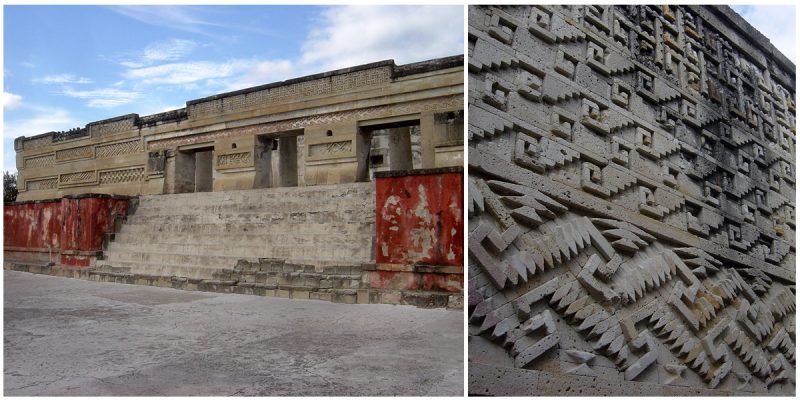Mitla is the second most important archaeological site in the state of Oaxaca in Mexico and the most important of the Zapotec culture. The site is within the modern municipality of San Pablo Villa de Mitla.
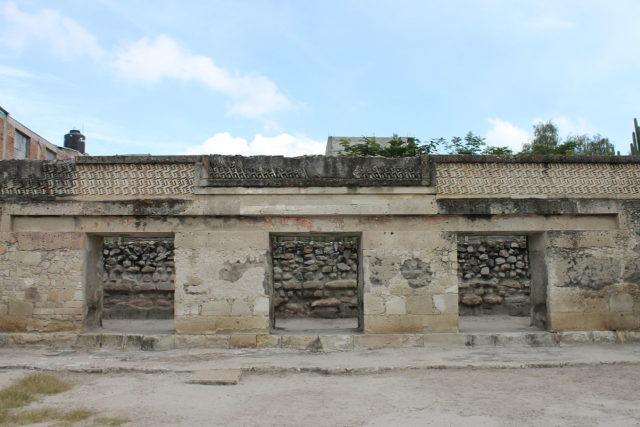
The name Mitla is derived from the Nahuati name Mictlán, which was the place of the dead or underworld. Its Zapotec name is Lyobaa, which means “place of rest.” The name Mictlán was Hispanicized to Mitla by the Spanish.
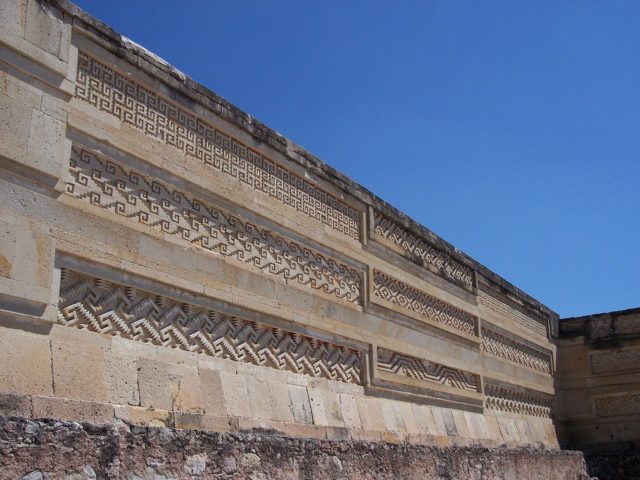
What makes this site unique among Mesoamerican sites is the elaborate and intricate mosaic fretwork and geometric designs that cover tombs, panels, friezes, and even entire walls.
There are six basic patterns. The individual designs are bound together in horizontal bands. Some suggest that this arrangement , which offers more than 100 different configurations is a coded language. None of the fretwork designs are repeated exactly anywhere in the complex.
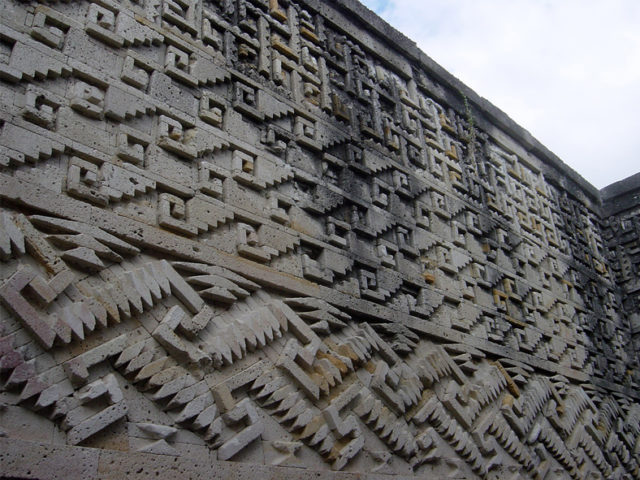
The placement is so precise that no mortar is required. Even with modern technology, the accuracy of the Mitla mosaic’s stonecutting would be cost prohibitive. Experts believe the decoration work would have cost ten times more than the buildings they adorn.
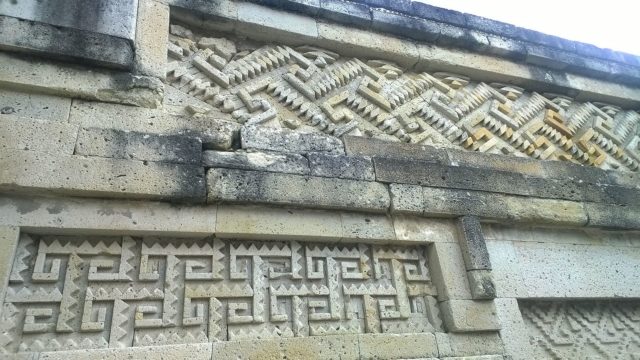
These mosaics had deep symbolic significance. What they meant remains a mystery.
Another important part is the Church of North Group that lies at the entrance to the site. It was believed that in this group lived the lord and lady of the underworld, so the church was built here to keep the devil from escaping.
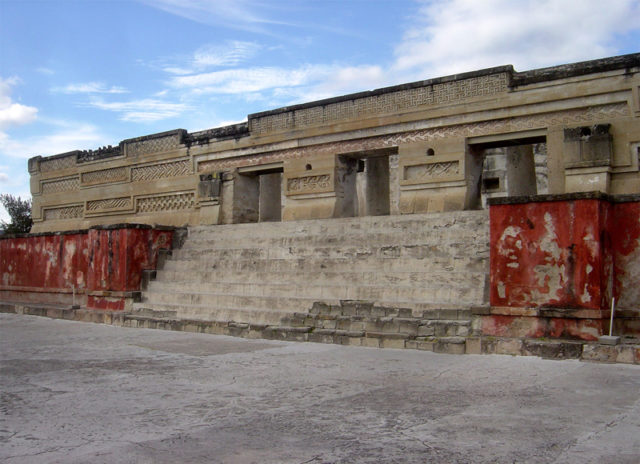
To the south of the Church Group is the Columns Group, whose main building is called the Palace. The main building is called the Palace or the Grand Hall of Columns.
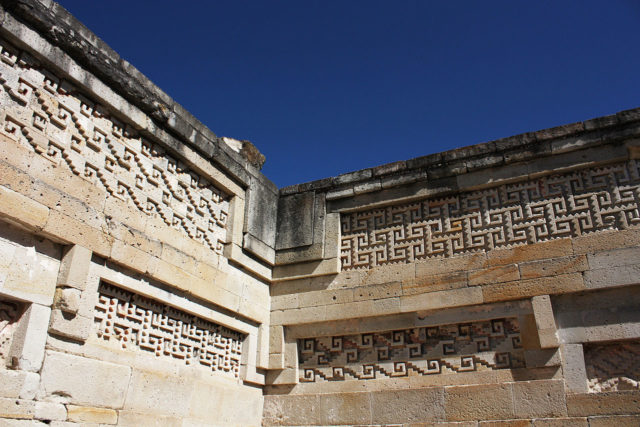
The two main concerns for the Mitla site are eroding effects of wind, rain, and graffiti. The latter, which is mostly painted or etched, has been a serious problem at least since the early 20th century. To protect the ruins , shelters have been constructed over a number of the rooms of the Palace of Columns Group.
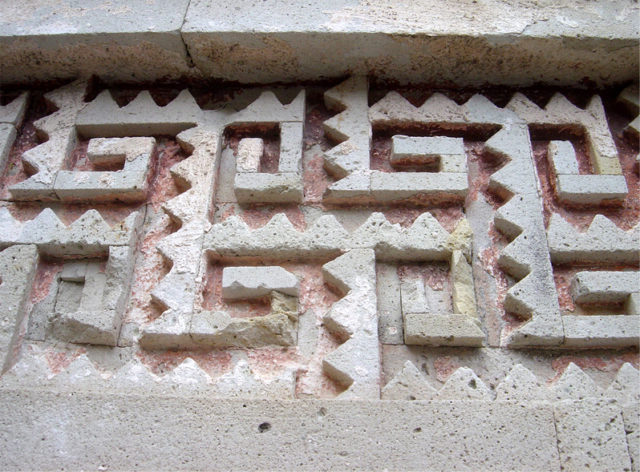
The Mitla site is very important to the modern town of San Pablo Villa de Mitla, as tourist related activities support most of the economy, but many residents here feel that neither the site or the town is promoted sufficiently by the government.
